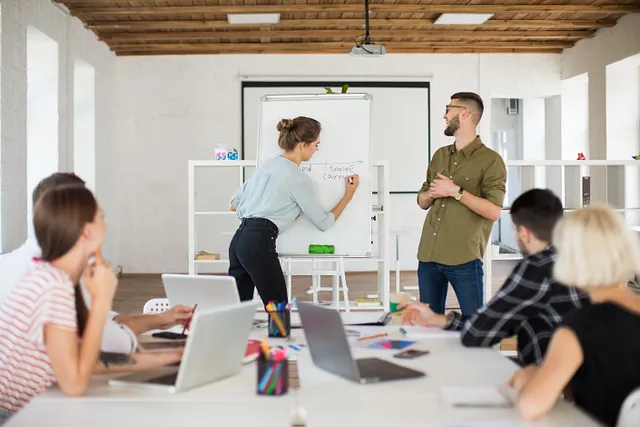
In today's rapidly evolving landscape/environment/realm, educators are faced with the challenge/opportunity/imperative of engaging/motivating/inspiring students in a digital/technologically advanced/virtual world. This interactive/immersive/collaborative workshop, titled "Empowering Learners in the Digital Age: A Workshop on Innovative Teaching Strategies", aims to provide teachers with practical/actionable/effective strategies and tools/resources/techniques to cultivate/foster/nurture student engagement/participation/active learning in the digital age.
- Participants/Attendees/Learners will explore a variety of innovative/creative/cutting-edge pedagogical approaches/methods/strategies that leverage technology to enhance/improve/augment the learning experience.
- Sessions/Activities/Workshops will focus on practical/hands-on/experiential applications of technology/digital tools/learning platforms in the classroom.
- Participants/Teachers/Educators will have the opportunity to network/collaborate/share best practices with colleagues and experts/leaders/professionals in the field.
{By/Through/Upon completion of this workshop, participants will be able to/gain/develop/acquire a deeper understanding of how to effectively integrate/implement/incorporate technology into their teaching practice. They will also leave with actionable/practical/useful strategies that they can immediately apply in their classrooms to enhance/improve/transform student learning and engagement/motivation/achievement.
Developing a growth mindset is crucial for both teachers and students to achieve academic success and personal flourishing. When educators embrace this philosophy, they challenge their students to view mistakes as opportunities for learning and setbacks as temporary hurdles. This encouragement creates a classroom environment where risk-taking is encouraged, leading to greater intellectual growth.
Furthermore, teachers who cultivate a growth mindset demonstrate a lifelong love of learning, constantly seeking new knowledge and approaches. They understand that their own expertise is regularly evolving and are eager to consider their teaching practices. This dedication to professional development not only benefits the teacher but also deeply impacts the learning experiences of their students.
- By fostering a growth mindset, teachers create a supportive and collaborative learning environment where all students feel confident to participate
- Ultimately, cultivating a growth mindset is essential for both teachers and students to unlock their full potential and excel in their academic pursuits.
Instructional Differentiation
Effective educators recognize that students learn in diverse ways. {Therefore|As a result, differentiated instruction emerges as a critical pedagogical approach to accommodate these differences. By adapting learning experiences, teachers can facilitate that all students have the ability to excel. Differentiated instruction can take many {forms|shapes, including varying the content, process, product, or classroom setting.
- {For example|, teachers might offer students a range of tasks to demonstrate their comprehension.
- On the other hand, they might present information in diverse mediums to resonate with different learning styles.
- Ultimately, differentiated instruction aims to foster a inclusive learning atmosphere where every student feels valued and has the resources to reach their full potential.
Fostering Collaborative Learning Communities: A Practical Guide for Teachers
Creating a thriving collaborative learning community within your classroom can be an exciting journey. To embark on this path, instructors should first cultivate a culture of empathy. Promote active participation by incorporating diverse learning activities that require teamwork and collaboration.
- Design group work thoughtfully, grouping students based on abilities
- Provide clear guidelines and expectations for collaborative tasks.
- Acknowledge successes and foster a positive learning environment where pupils feel safe to express
By adopting these strategies, teachers can effectively build collaborative learning communities that enrich students' academic and social-emotional development.
Measurement Strategies for Successful Instruction and Acquisition
Effective teaching and learning rely heavily on robust assessment strategies. These strategies provide educators with valuable data into student understanding, enabling them to modify their instruction accordingly. Varied assessment methods, such as formative assessments, quizzes, projects, and observations, allow educators to measure student achievement. By regularly interpreting assessment data, teachers can identify areas of strength and weakness, allowing them to provide targeted support and personalize instruction to meet the unique needs of each student. Ultimately, employing effective assessment strategies fosters a constructive learning environment where students are engaged to reach their full potential.
Harnessing Technology to Augment the Classroom Experience
Technology has revolutionized numerous aspects of our lives, and education is no exception. Integrating technology into classrooms can significantly transform the learning experience for both students and educators.
Engaging whiteboards facilitate collaborative learning, while educational apps and software provide personalized instruction to meet individual teachers training topics needs. Virtual reality (VR) and augmented reality (AR) offer immersive educational experiences that can inspire curiosity and foster a deeper understanding of complex concepts.
Additionally, technology can simplify administrative tasks, allowing educators to allocate more time on instruction and student interaction.
By effectively harnessing the power of technology, we can build a more stimulating and productive learning environment for all.
Comments on “Cultivating 21st-Century Skills: An Exploration of Cutting-Edge Pedagogy”